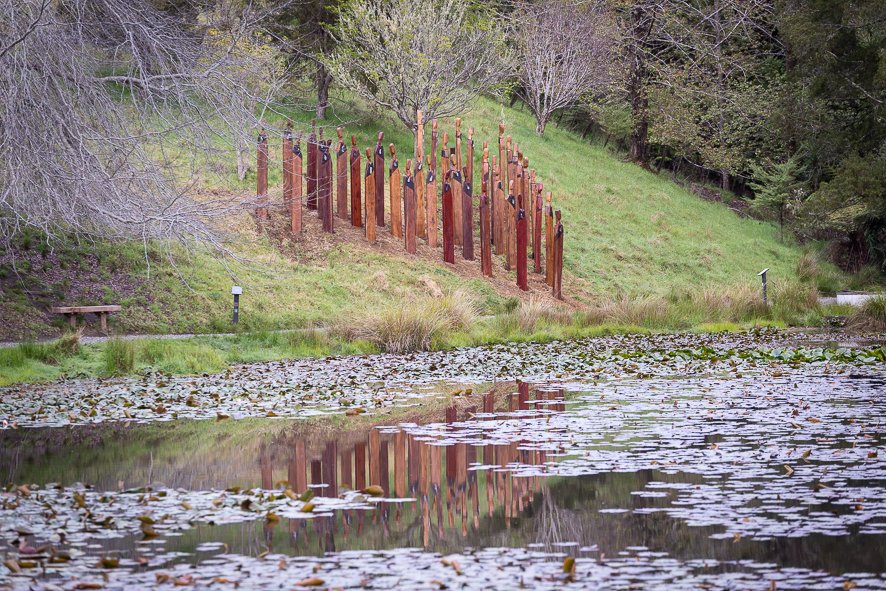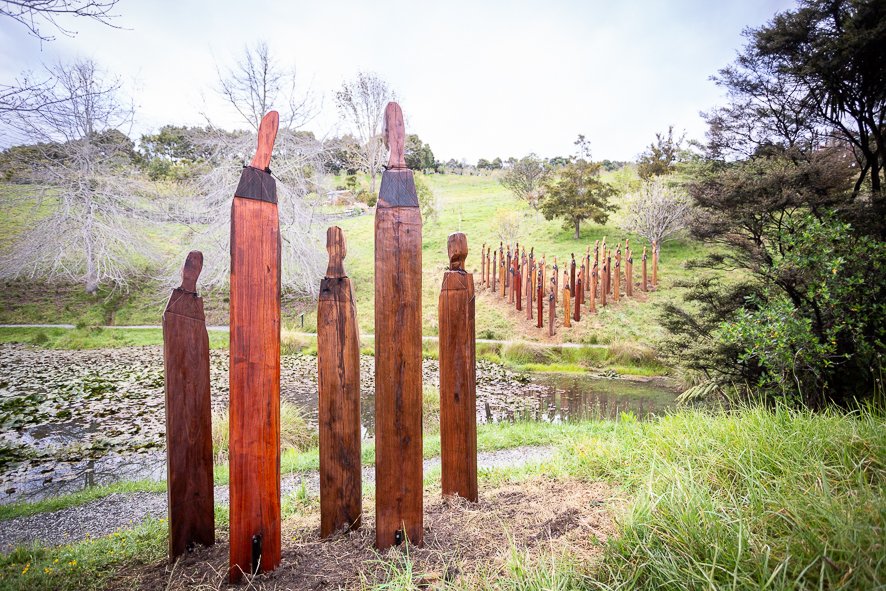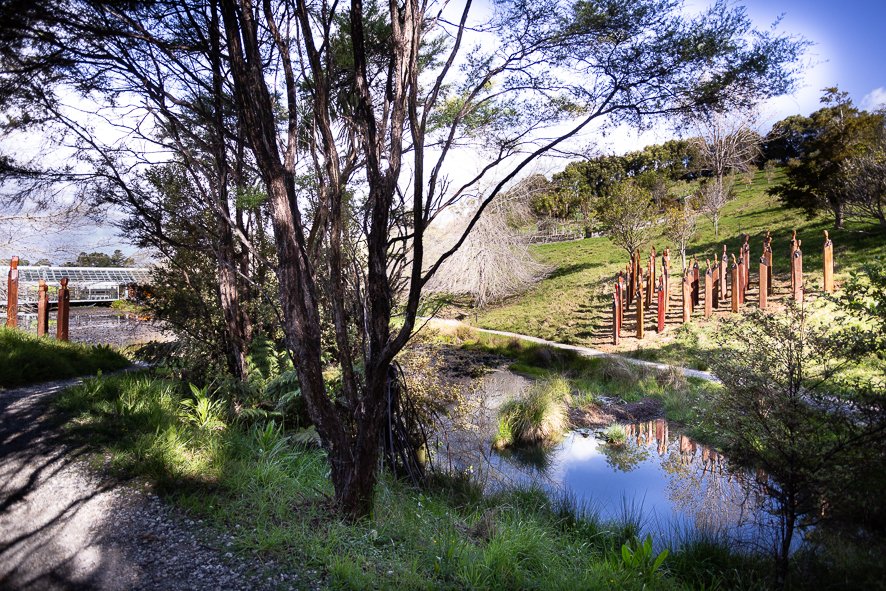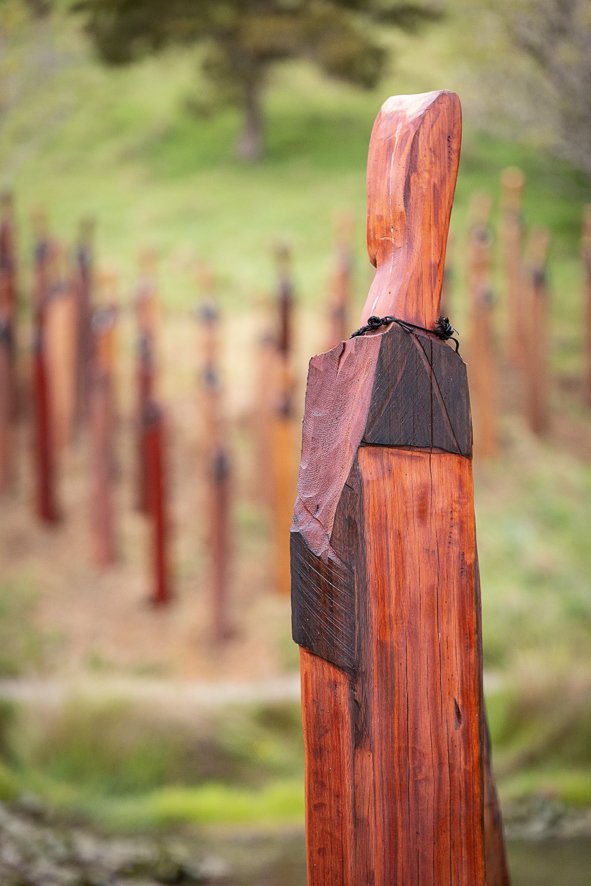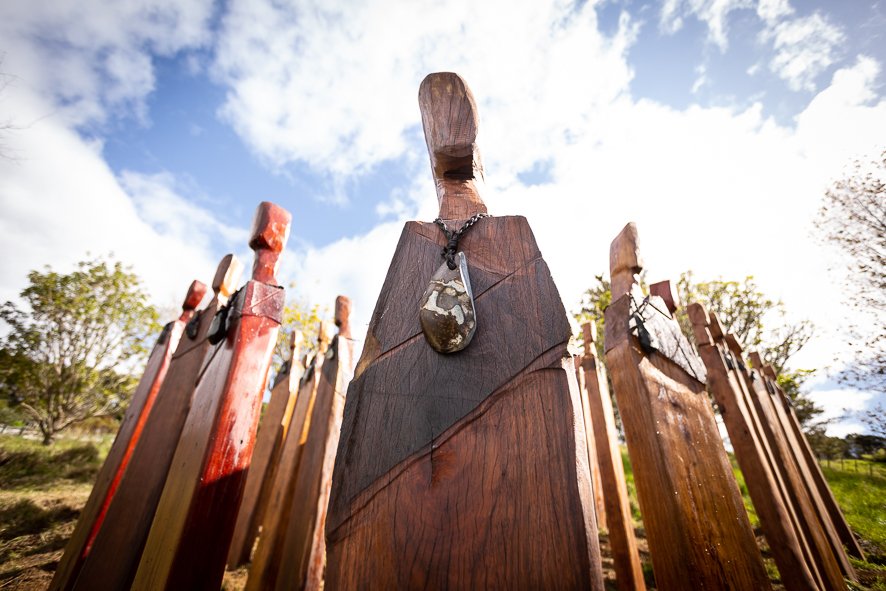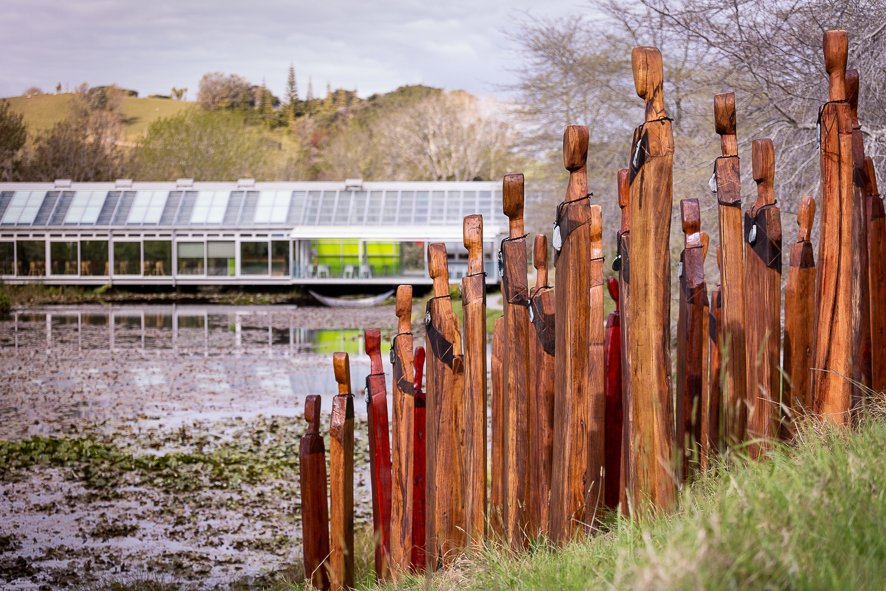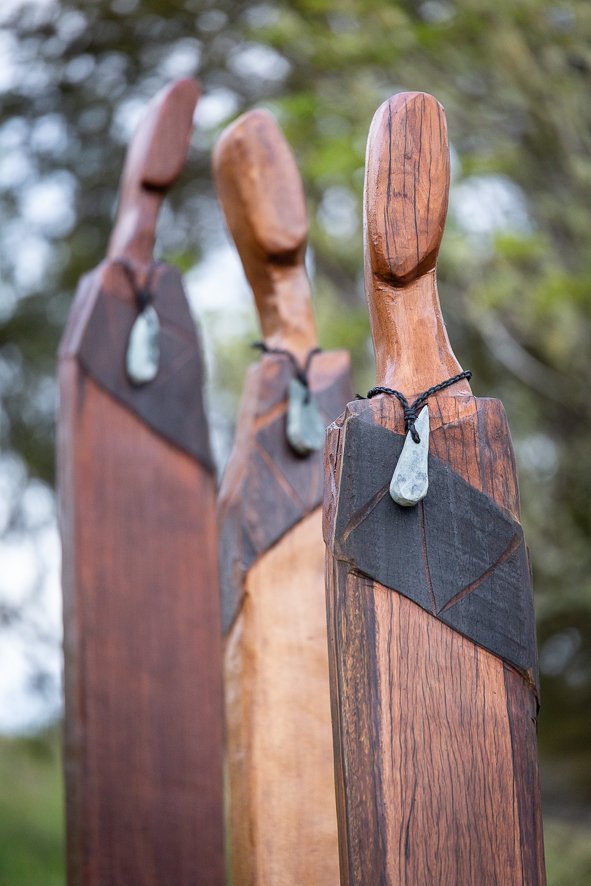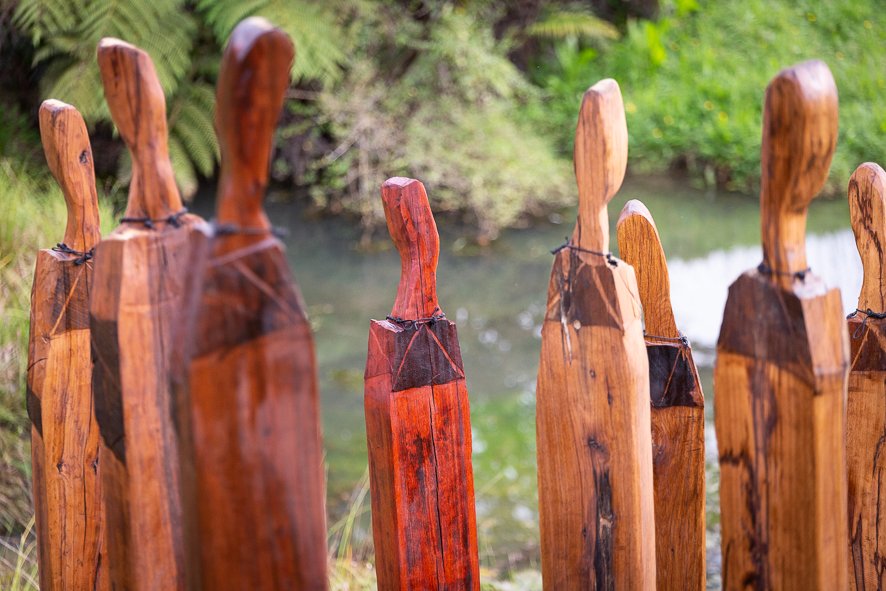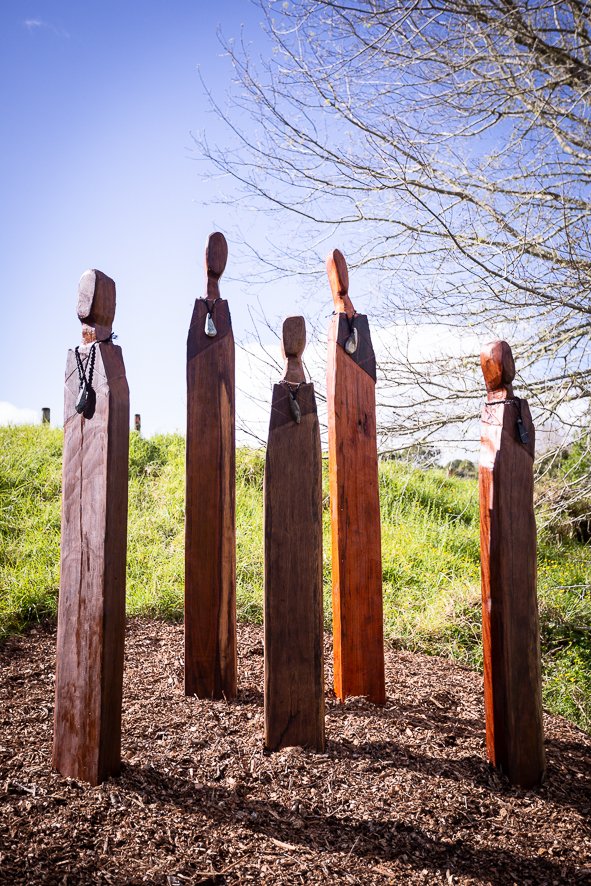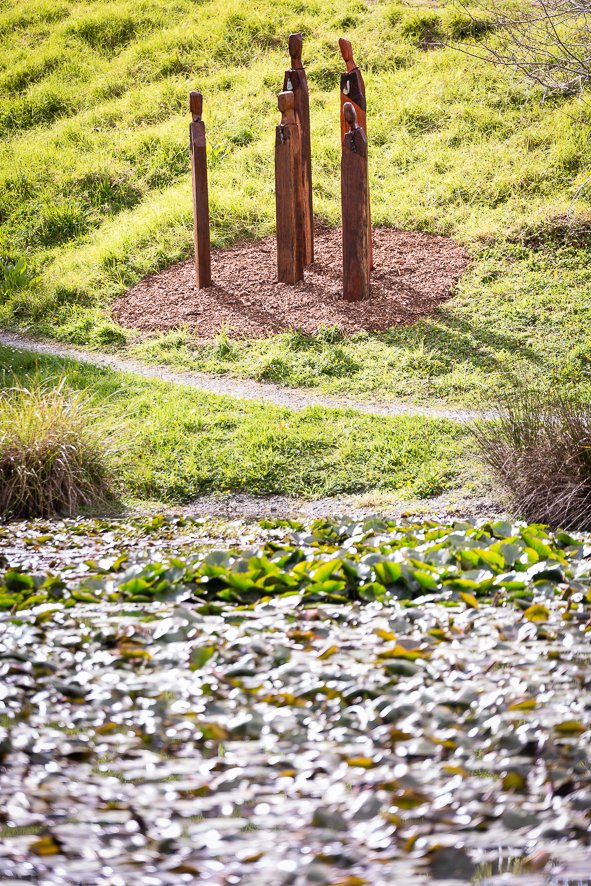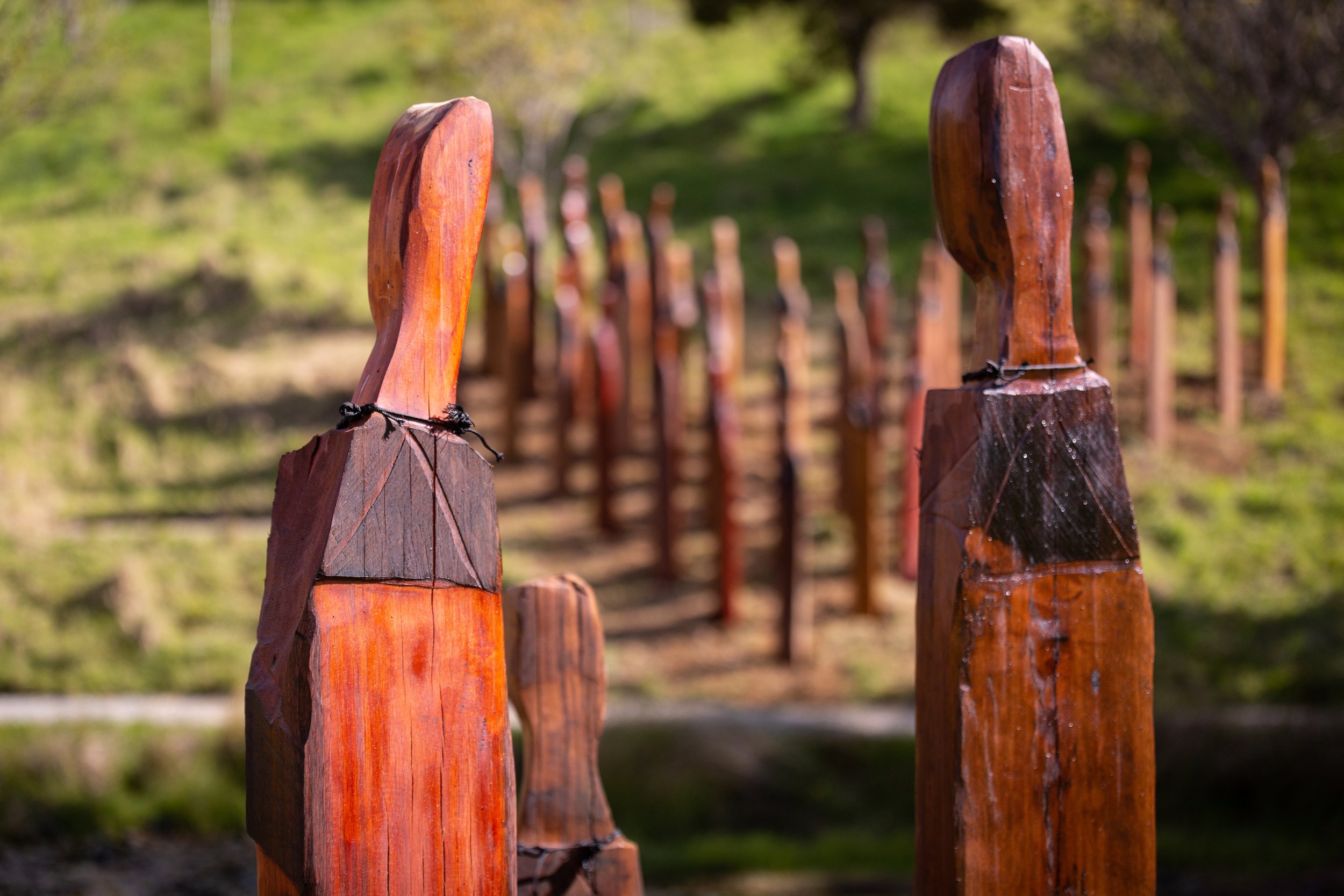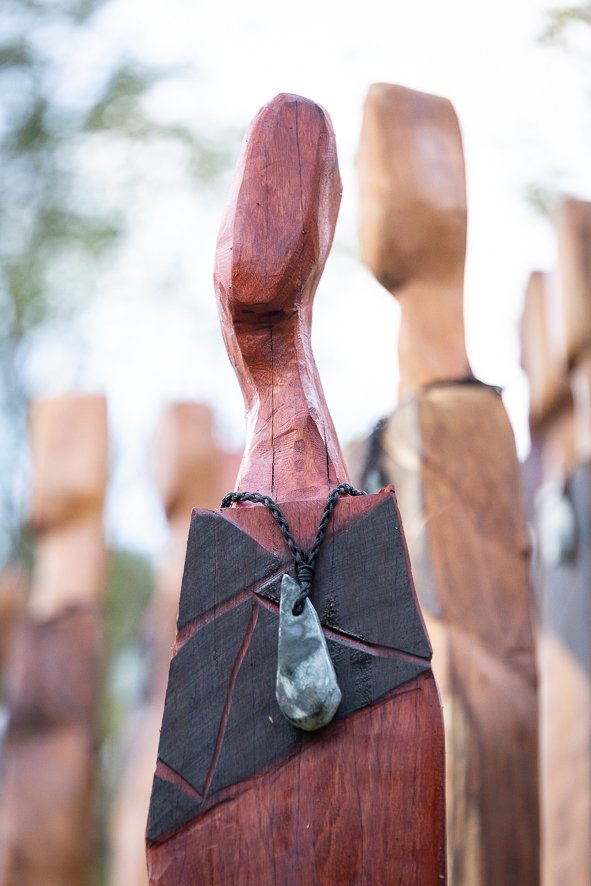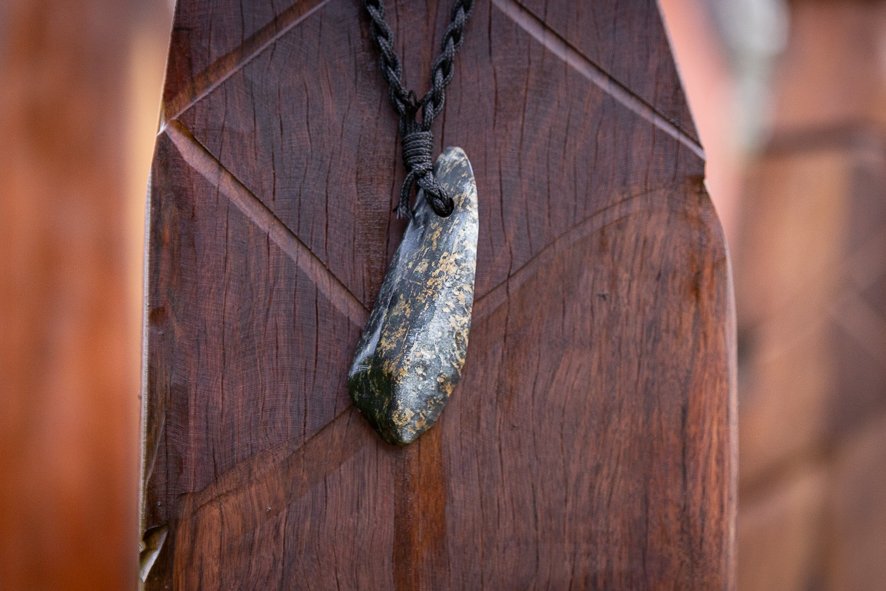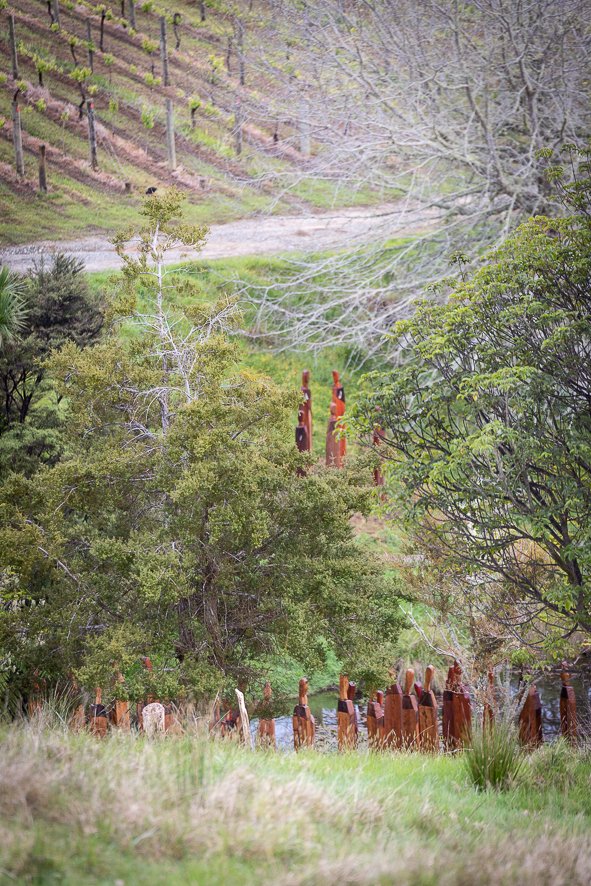Anton forde (Taranaki, Gaeltacht, Gaelic, English)
Ngā Manaaki, 2023
44 timber pou, carved from Australian hardwood (Jarrah, Ironbark, Eucalyptus), pounamu taonga
Each pou 2700mm high (2200mm above ground)
Available individually, in groups or as a full installation
Price on request
Carved over the space of 6 months, Anton Forde’s spectacular Ngā Manaaki is a site-specific installation, inspired by the land and philosophy of Brick Bay.
Composed of a formation of 44 individual contemporary pou with a commanding presence on the hillside, this artwork explores the concept of manaakitanga – a broad and expansive term encompassing the notions of support, care, protection, hospitality, respect and generosity. Perhaps the most profound meaning in the Brick Bay context is the act of caretaking, whether it is for the whenua, for others, or one’s own wellbeing.
As Forde explains:
“The whakapapa / genealogy of this work is grounded in the philosophy of Brick Bay…the Didsbury whānau, the whenua, the reality of sustainability and the connecting mahi toi are all relevant aspects when we link the ability to leave a legacy to our whānau and in turn the wider world. At present we are seeing a real shift in our approach to using land and water as a resource. At Brick Bay I feel this approach has been embedded in whenua / land and tangata / people for many years, and the legacy is whakapapa.”
The pou are carved from sustainably sourced Australian hardwoods ((jarrah, ironbark, eucalyptus) and the dazzling spectrum of colour creates movement and vibrancy across the installation. The varying shades give each pou a unique identity, together with the wood grains which roam over the pou like fingerprints. Furthermore, the distinctive poise and pose of each figure, the carved korowai tāniko (cloak design) and the individual pounamu taonga (greenstone pendants) are marks of self-expression and individualism. There is a deliberate move away from uniformity; rather there is a celebration of diversity, and we are reminded that the subtleties of a person such as expression and gesture are what make up their character.
But while each pou evokes the essence of an individual, the emphasis of the installation rests on kotahitanga (unity), and the power of collective formation. Knitted into the earth and following the curvature of the hillside, the pou are carefully positioned into a kao kao (bend or side of the ribs) pattern of Te Arawa and East Coast iwi. Kao kao designs are formed by zigzag lines that create chevrons - a symbolic shape associated with the protection of home and that which is taken by flocks of migratory birds, formations of fighter jet planes and the collective unity of haka action.
Standing at 2.2 metres above ground and gathered above ground level, the pou look over visitors to the site with a gentle watchfulness. Forde describes the pou as having “a feeling of majesty and larger-than-life presence” and there is a distinctly humbling feeling of kaitiakitanga (protection) at play. This results in a strong desire to stand with or sit with the pou in the way one might spend time at a site of memorial - to show up respectfully, with dedication and honour, to pay tribute. Minimal facial expressions in the pou add to, rather than detract from, the character of the work, and in their neutrality we as viewers are able to place our own layers of meaning upon them. This sense of ambiguity allows the space to feel precious and sacred, like spending time with one’s ancestors.
Across the water stands a small gathering of pou - Whānau - creating a conversational synergy between the two groups. This activates not only each lakeside, but the shimmering space between. Reflections dance around the lake as the orientation of site to sun alters, meaning the effects from multiple viewpoints are constantly shapeshifting. There is a sense of magnetism to the water and an anchoring of the pou towards the lake, which references the legend of Ruatepupuke - the grandson of the sea god Tangaroa. Overall, there is a serene balance between land and water, between the individual and the collective. Gazing upon the formation of pou, we are left to ponder - what might we achieve if we all worked together?
In a powerful trans-Tasman partnership, Ngā Manaaki at Brick Bay opens alongside Anton Forde’s Papare/Protection at Sculpture by the Sea, Bondi. Addressing the Pacific Ocean and the elevated headland, Papare also features a large formation of 60 individual pou, arranged in a kao kao pattern. This is a reference to the two countries that were once united as one landmass and dedication to the ocean that now flows between them.
Forde’s hope is that together these works create a symbolic offering of kotahitanga (unity) and whakamaru (protection) for the land and the ocean that connects us.


